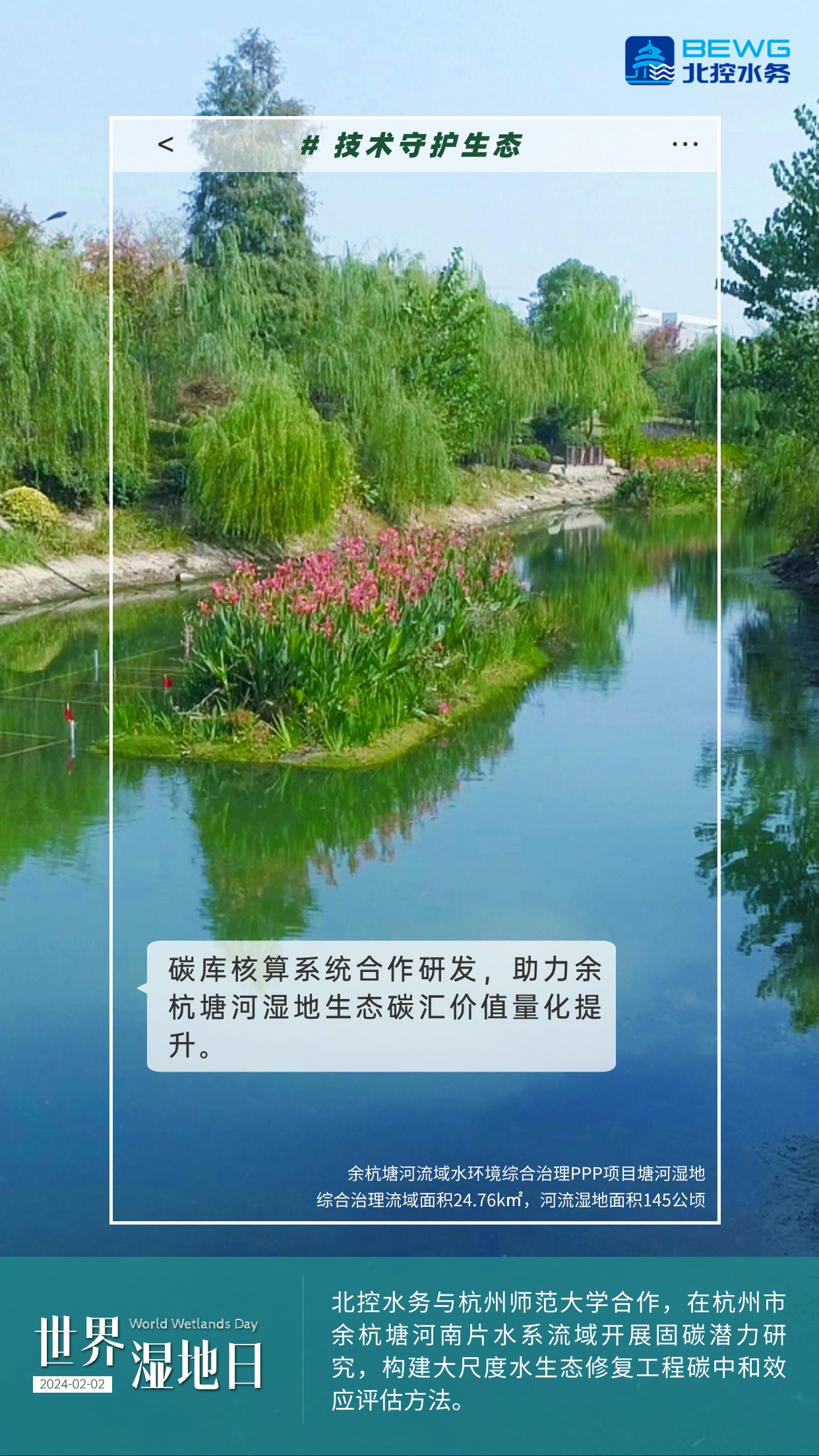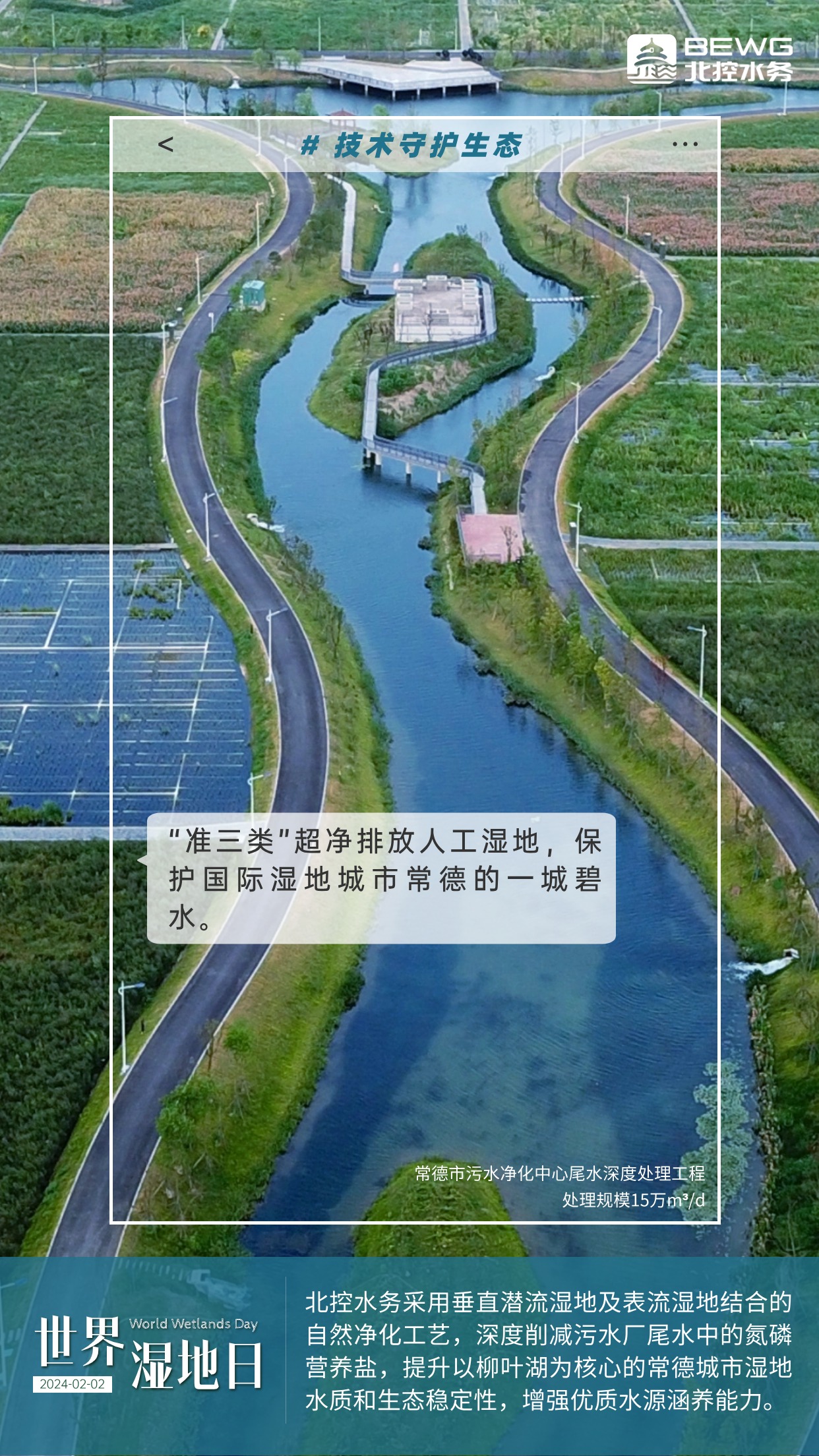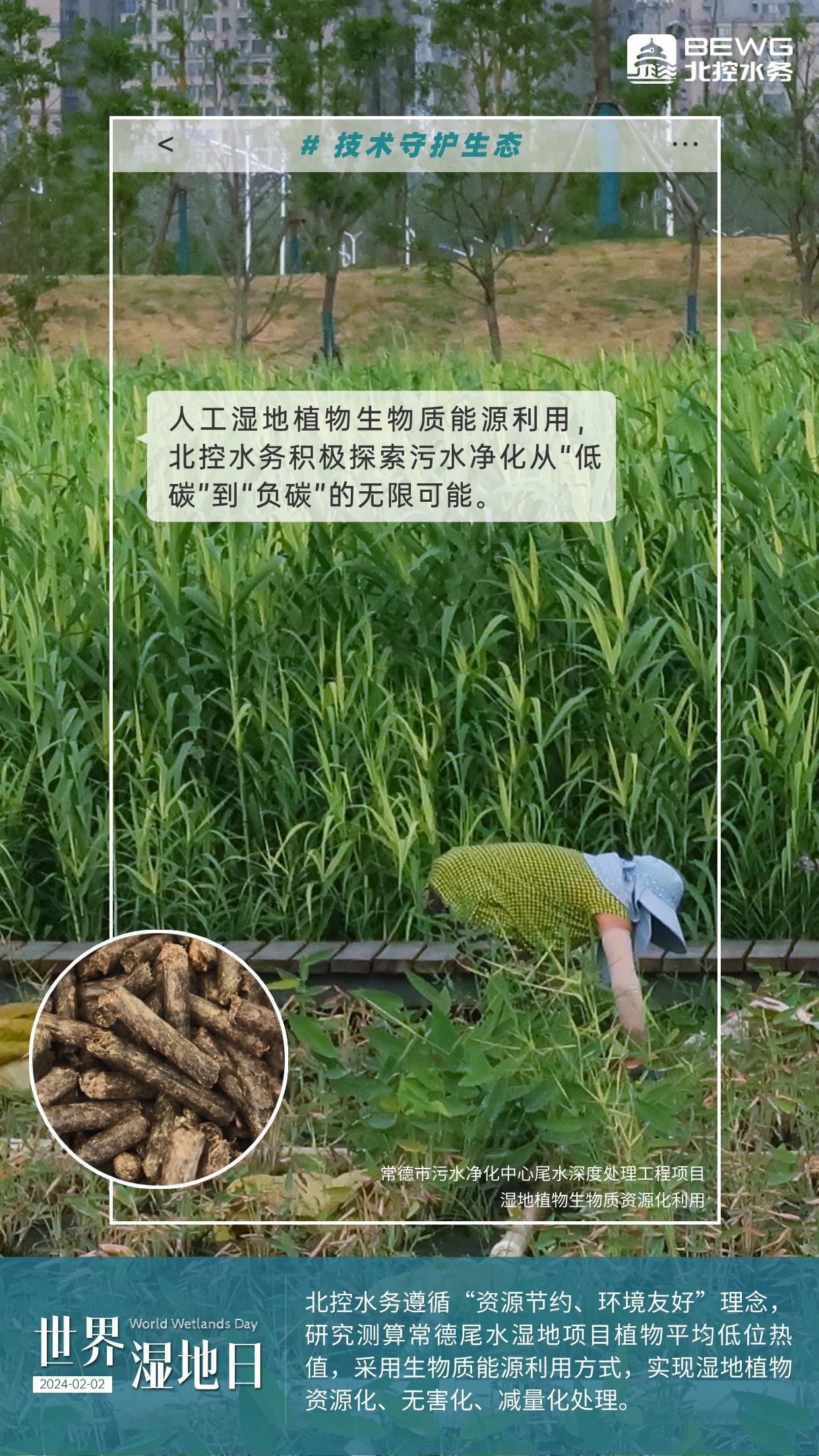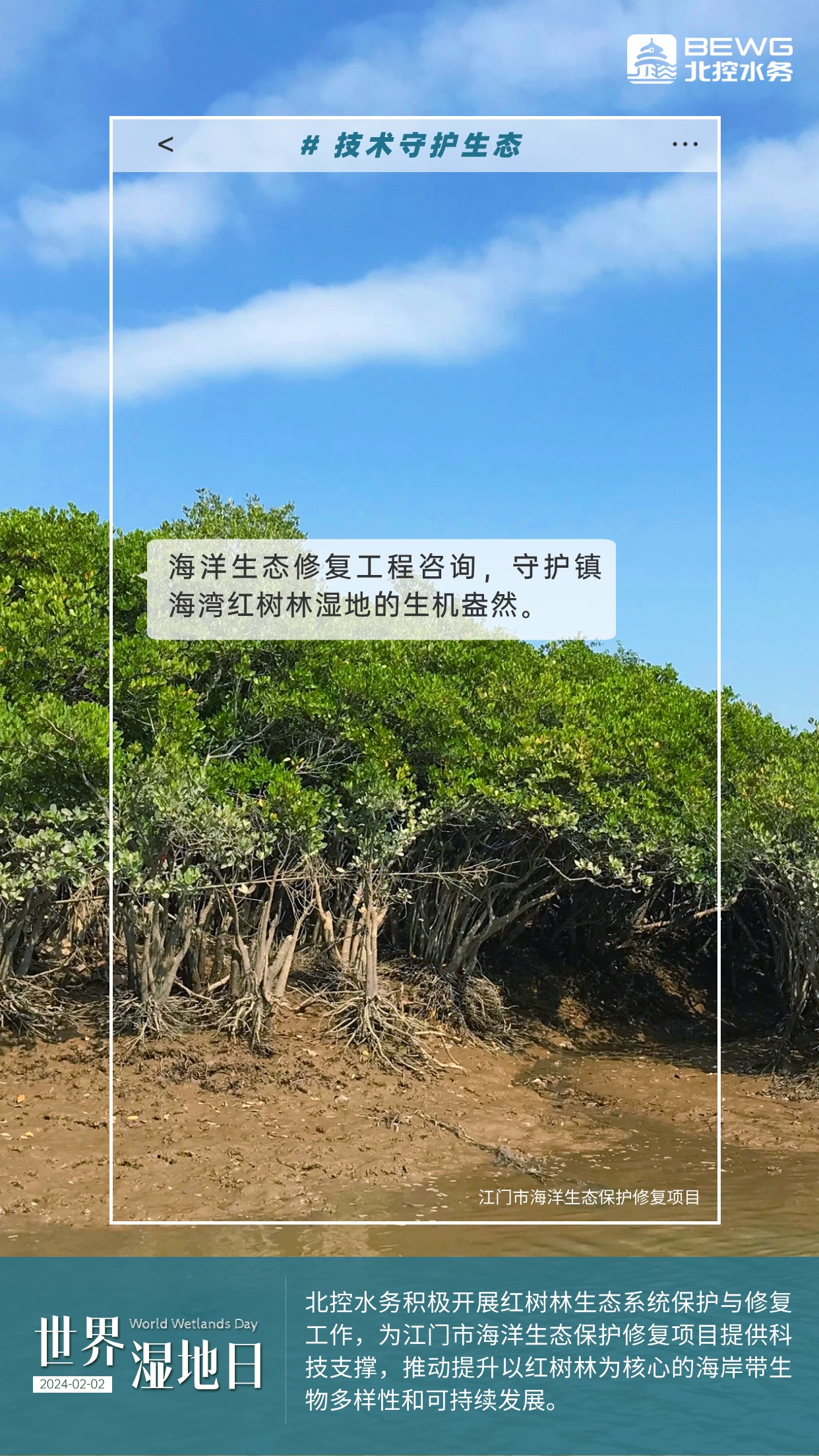World Wetlands Day: BEWG delivers an ecological answer sheet full of "wetness" with practice
Today is the 28th World Wetlands Day, and this year's theme is "Wetlands and Human Well-being". As the "kidney of the earth", wetlands not only provide rich natural habitats, but also have strong carbon sink capacity, are an important part of the carbon sink of the earth's ecosystem, and play an indispensable role in responding to climate change.
Based on the practice of the project, BEWG has carried out a series of prospective studies on wetland restoration and carbon sequestration, contributing to the dual carbon goals.
Carbon pool accounting research and development Help wetlands increase the value of carbon sinks
The core of wetland carbon sink value assessment is carbon sink accounting. The commonly used wetland carbon sink accounting methods include carbon pool change method and net productivity method, and in practice, the carbon pool is mostly calculated by means of sample plot measurement and remote sensing estimation.
BEWG cooperated with Hangzhou Normal University to carry out a carbon sequestration potential study in the area of the Tanghe River System Comprehensive Improvement Project in Yuhang District, Hangzhou, which was implemented and operated by BEWG, aiming to demonstrate the carbon sequestration and sink increase capacity of the Yuhangtang River River ecosystem and construct a carbon neutrality effect assessment method for large-scale water ecological restoration projects. After a one-year field monitoring and quantitative assessment study, a carbon sequestration assessment system for aquatic ecosystems was successfully developed, which provides a practical tool for accurately assessing the carbon sequestration potential of urban river wetlands.

Natural purification process Ultra-clean discharge protects constructed wetlands
The natural solution of ultra-clean discharge is to combine high-standard sewage treatment technology with natural treatment methods, and incorporate wetlands into a part of sewage treatment to solve the problem of continuous improvement of sewage treatment standards.
Relying on more than 500 acres of constructed wetland, the tailwater of the tailwater advanced treatment project of BEWG Changde Sewage Purification Center is transported to 12 treatment units of the vertical flow constructed wetland through pipelines, and passes vertically down through the wetland filler layer from the surface layer. Aquatic plants absorb and other effects, pollutants are gradually removed, and the water quality reaches the surface level of Class III., which is discharged into the Chuanzi River after ultraviolet disinfection, which is used as an ecological water supply source, steadily improving the water quality and ecological stability of Changde urban wetland with Liuye Lake as the core, and enhancing the conservation capacity of high-quality water sources.

Biomass energy utilization Explore the carbon reduction pathways of wetland plants
Biomass energy has the advantages of renewability and low pollution, and has an extremely important position in the clean energy system. According to the "3060 Blue Book of Zero-carbon Biomass Energy Development Potential", it is expected that by 2030, the use of biomass energy will reduce carbon emissions by more than 900 million tons for the whole society, and by 2060, carbon emissions will be reduced by more than 2 billion tons.
Plants are at the heart of constructed wetland ecosystems, not only removing pollutants, but also promoting the recycling and reuse of nutrients in wastewater. In the past, wetland plants were mostly disposed of by landfill, on-site stacking or incineration after harvesting, which polluted the environment and cut off the material cycle and energy flow of the ecosystem.
BEWG actively explores the recycling, harmlessness and reduction of plants in constructed wetlands, and strives to create emissions from "carbon reduction" to "carbon negative". In the tail water advanced treatment project of Changde Sewage Purification Center, based on the research and calculation of the average low calorific value of plants in the wetland, the renewable biomass resources of wetland plants are used to dry, compress and solidify the harvested reeds and cattails to make high-density biomass solid fuels, which provides an alternative option for energy supply and reduces the negative impact on the environment.

Marine ecological restoration Protecting precious coastal "blue carbon" ecosystems
As the closest type of wetland to the city, the improvement of the carbon sink value of freshwater river wetlands and constructed wetlands makes them an important part of the carbon neutrality path. As one of the three major coastal "blue carbon" ecosystems recognized internationally, mangrove wetlands have huge potential for carbon sequestration per unit area, and the carbon sink storage period can be as long as hundreds or even thousands of years.
Mangrove wetlands, which live by the sea and connect the land and the sea, are among the most productive ecosystems in the world and one of the wetland systems with the highest carbon sink density. Mangrove forest is a general term for woody plant communities that grow in the intertidal zone of tropical and subtropical coasts, and is named because the bark is rich in tannic acid and turns red when cut. It can not only prevent wind and waves, but also purify seawater, and also provide a habitat for fish, shrimp and birds, and is known as "coastal guard" and "marine green lung".
BEWG actively participates in the planning of mangrove restoration in Jiangmen, Guangdong, including the establishment of a sound mangrove ecological protection system, the construction and restoration of mangrove forests, the ecology of seawalls, and the construction of coastal shelterbelts, etc., and jointly completes the restoration of mangrove forests in Jiangmen with high-quality products and solutions.

There is still a long way to go in wetland protection and even ecological environment management. BEWG is actively carrying out forward-looking work such as carbon sink monitoring and the preparation of methodological recommendations for voluntary emission reduction projects, which will provide basic technical tools for the realization of value in carbon market trading and green finance in the future of relevant wetland types. In the future, BEWG will continue to increase investment in scientific and technological innovation, strengthen R&D and promotion of low-carbon and environmentally friendly technologies and solutions, and work with more partners to jointly address the challenge of climate change and protect the earth.







